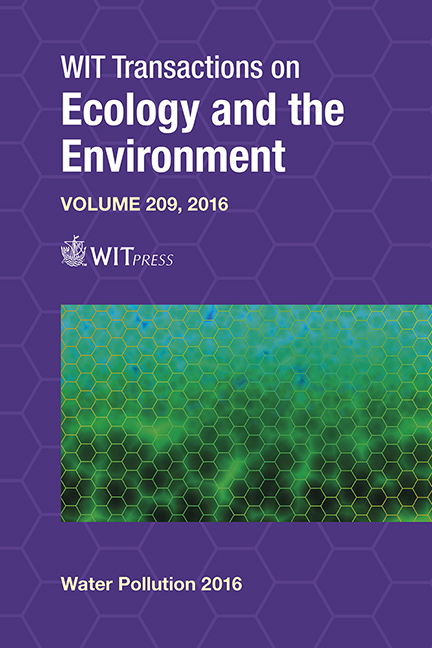Use Of Magnesium Silicate Functionalized With Thiourea For Sr(II) And Tl(I) Removal From Polluted Water
Price
Free (open access)
Transaction
Volume
209
Pages
11
Page Range
197 - 207
Published
2016
Size
770 kb
Paper DOI
10.2495/WP160181
Copyright
WIT Press
Author(s)
A. Gabor, C. M. Davidescu, A. Negrea, M. Ciopec, P. Negrea
Abstract
An appropriate management of high level radioactive waste and removal of radiotoxic elements is important for the development and safety of the nuclear energy system. Sr(II) is a metal ion present in high level radioactive waste and has to be removed for a better disposal in geological formation. Another toxic metal is Tl(I). It is used in numerous industries and its toxicity for the human body is higher than conventional heavy metals. This study investigates the adsorption process of Sr(II) and Tl(I) from aqueous solutions on an adsorbent material. The adsorption proprieties of the solid support were improved through functionalization, using the dry method. The novelty of this material is that the solid support – magnesium silicate – is functionalized with a new extractant, thiourea dissolved in ethyl alcohol. The obtained material was the subject of an energy dispersive X-ray analysis (EDX) and scanning electron microscopy (SEM). In order to establish the adsorption capacities of the adsorbent material, it was used in the removal process metallic ions. Results show a good performance for the Tl(I) ion, with an adsorption capacity of 4.2 mg/g. Kinetically, the adsorption process of these metal ions have the best fit for the pseudo-second-order kinetic model. The removal process through adsorption is endothermic and spontaneous due to the thermodynamic studies. Equilibrium studies were also carried out for the Langmuir, Freundlich and Sips models. The new functionalized material proves to be favourable as an adsorbent material in the removal of Sr(II), Tl(I) from polluted water.
Keywords
thiourea, magnesium silicate, strontium, thallium, water pollution





